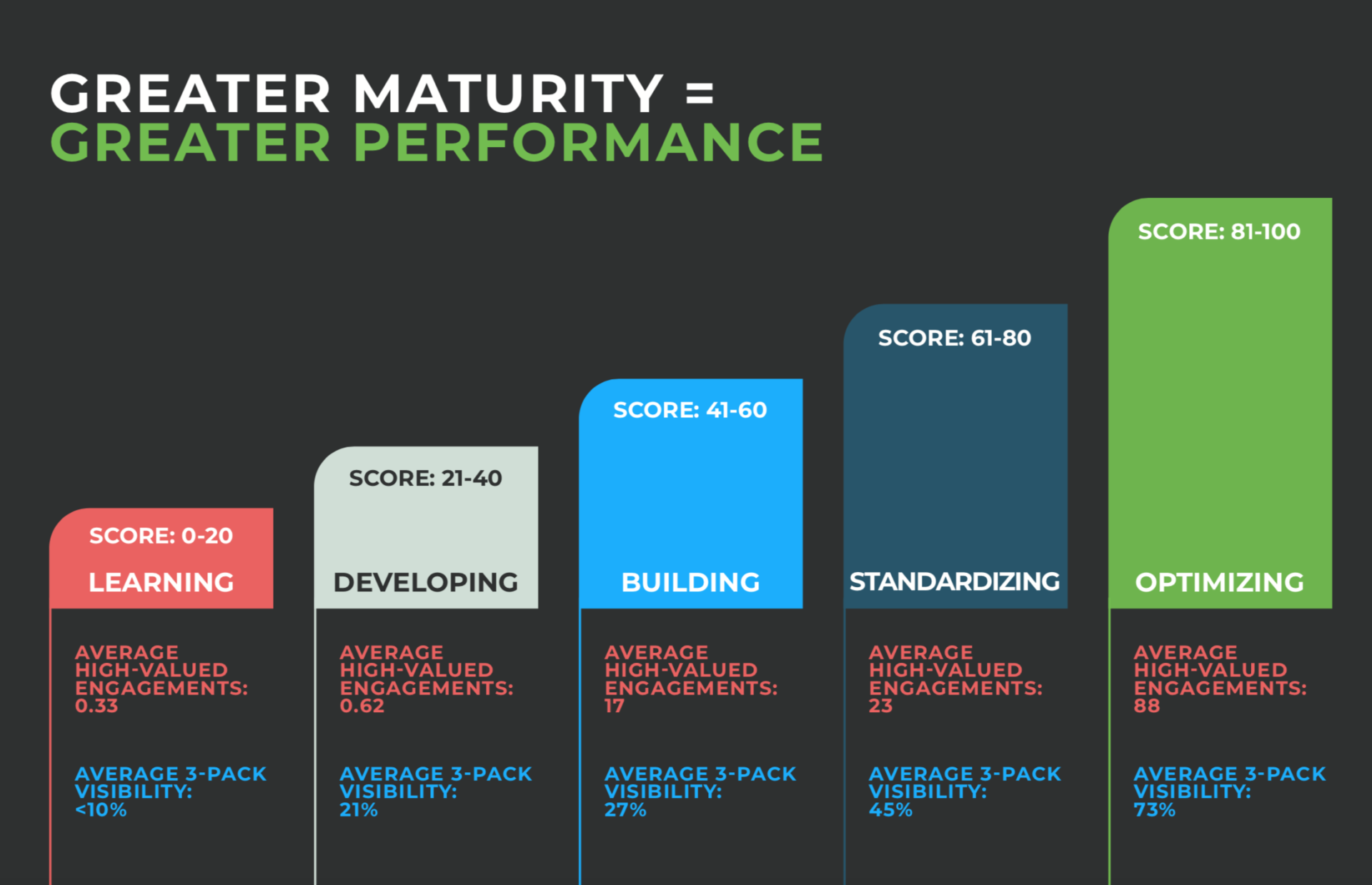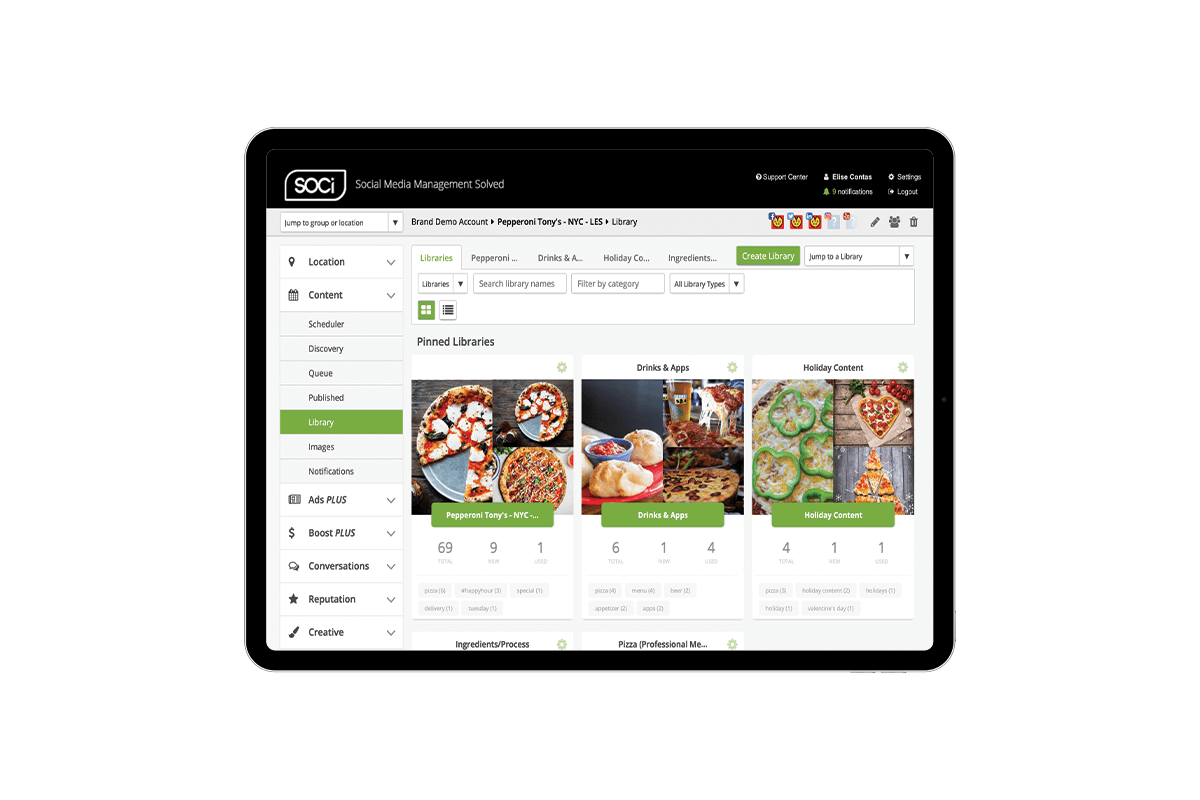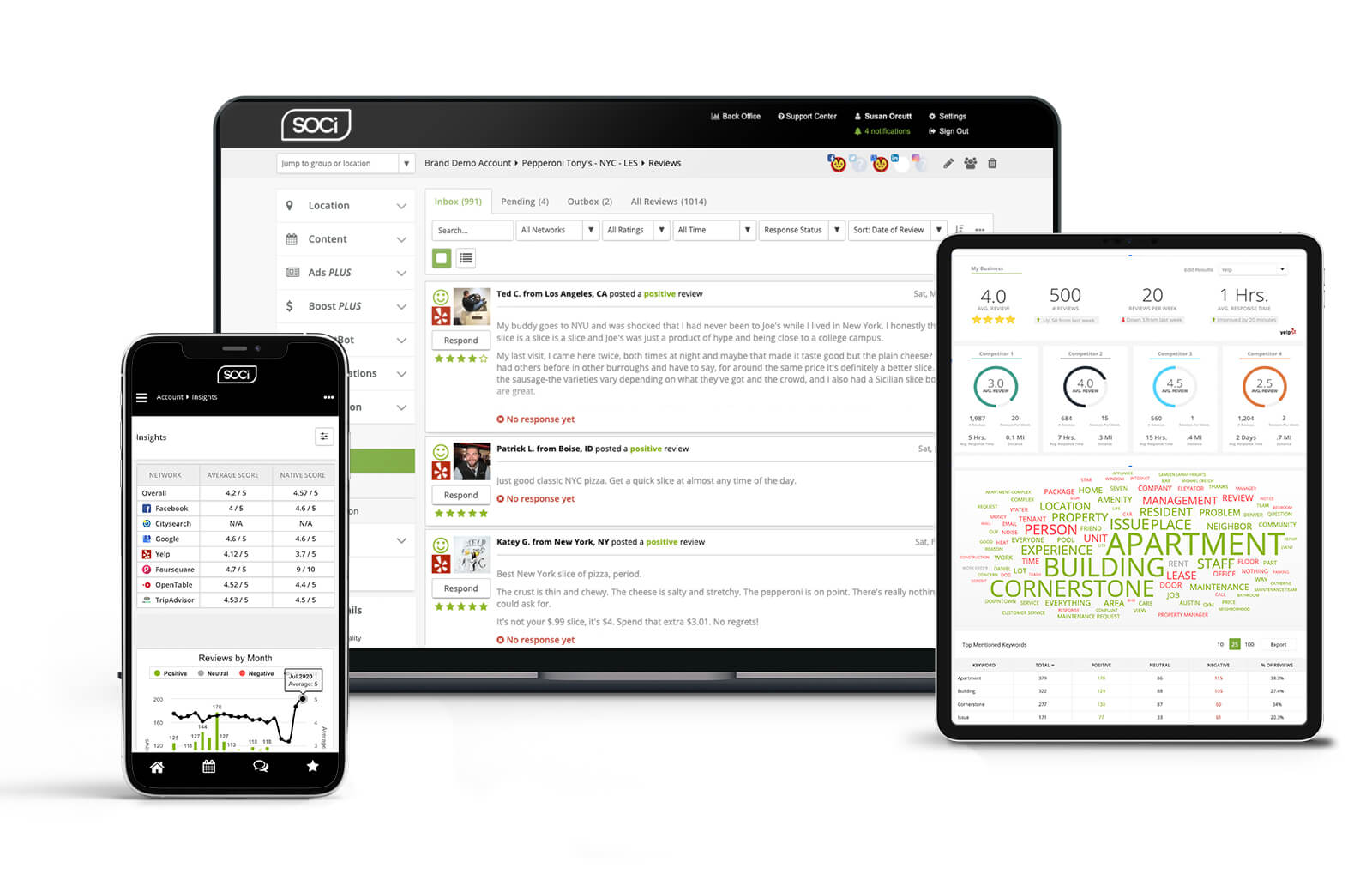What Are AI Agents? And Why Are They Critical to Local Marketing Success?
A Maturity Model for Localized Marketing: How to Take the Next Step
A Maturity Model for Localized Marketing: How to Take the Next Step
When it comes to localized marketing, wouldn’t it be great to know how your multi-location business stacks up? Whether you’re already crushing your localized marketing goals or looking to improve your efforts, it’s always good to see where you stand. In SOCi’s newly released 2021 Localized Marketing Benchmark Report (LMBR), we created a maturity model that defines localized search and social performance.
This maturity model provides a way for multi-location marketers to measure local search and social success and find tangible ways to improve these efforts further. Within this blog, we’ll break down the maturity model and what it means for your multi-location business and provide real-life examples of how you can strengthen your local search and social efforts to move up to the next level.
A Look Into the LMBR’s Maturity Model
In terms of local social, the highest measure of success comes down to high-valued engagements. High-valued engagements are the “social” part of social media that result in comments and shares of local content across target audiences and the local community. These engagement indicators help determine if a multi-location business gives local audiences the type of content they want to see. When high-valued engagements increase, the value of social efforts and overall reach will follow. The maturity model score reflects the amount of high-valued engagement a multi-location business receives for each post.
When looking at local search, the ultimate measure of success is the inclusion and rank within the highly coveted Google 3-Pack. If you’re not familiar, the Google 3-Pack is the method Google uses to display the top three local search results. The Google 3-Pack is also where most localized search commerce happens. The more visibility your multi-location business has in the Google 3-Pack, the better it’ll rank in terms of local search. Like local social, the maturity model ranks your multi-location business on the percentage of visibility in the Google 3-Pack.
Determining Where Your Multi-Location Business Stands
Now that you understand what factors the maturity model considers when ranking a business let’s get into how to determine your score. The maturity model is pretty straightforward. There are five different stages where a business can land based on your average high-valued engagements and visibility in the Google 3-Pack, as seen below.

While you might have an idea of where your business falls in the maturity model, it can be challenging to calculate the averages on your own. If you’re interested in knowing exactly where your business fails, you can request an audit for our 2021 LMBR here.
If you find that your business is in the learning or developing stages, it’s no reason to worry. Our LMBR found that the average multi-location marketer is still developing their local social programs. The learning and developing stages mean that your multi-location business has gotten started with localized marketing but still has opportunities to improve that will provide significant results in terms of new leads and sales. We’ll get more into what it takes to move up a stage in the maturity model later in this blog.
If your multi-location business is in the building or standardizing stages, good for you! It means you already have an established localized marketing strategy and can focus on optimizing efforts to increase high-valued engagements and visibility in the Google 3-Pack. Currently, the average multi-location marketer is in the building stage of their localized search programs.
And finally, if you find out that your multi-location business is in the optimizing stage of your localized marketing strategy, you’re in a prime position. You already know what you’re doing in localized marketing, and it’s all about maintaining and ensuring your multi-location business stays ahead of the competition with local search and social.
How to Level-Up Your Localized Marketing Maturity
Once you understand where your multi-location business falls in the maturity model for local search and local social, you can improve your strategies.
To move up a stage in the maturity model for local social, your multi-location business should:
- Increase the number of individual locations that post on social media. While the average for Facebook is 49 percent of locations and the standard for Google My Business is 17 percent, your business should strive to surpass these averages. The more locations posting, the better!
- Invest more time into social ratings and reviews. Your multi-location business should reduce the average time it takes to respond to a local review. Consumers don’t want to sit around waiting for a response, so again, the sooner, the better!
- Put a more significant focus on developing and testing more localized content to help drive more high-valued engagements. Consumers are craving a local connection more than ever, and local content provides this.
If you can focus on these areas of improvement, you’re sure to see an increase in high-valued engagement and take the next step up in the maturity model. There are also a few specific tactics your multi-location business should follow to improve local search.
Your multi-location business should focus on the following areas:
- Increase investment in your local profile management around the most prominent local search platforms. In short, your multi-location business should ensure that your multi-location business is visible on Facebook, GMB, and Yelp.
- Pay more attention to claiming and updating your local profile pages and listings. Your business should aim to claim 100 percent of local listings and ensure that the information found on them is accurate and updated regularly.
- Like local social, your multi-location business needs to put a greater focus on increasing the percentage of reviews responded to and reducing the number of days it takes to respond. When responding to reviews, personalization is key!
By following the steps outlined above, your multi-location business is sure to see an increase in your visibility in the Google 3-Pack. Now that you know what it takes to create a top-performing local search and local social strategy, it’s time to get started. While monitoring your local social efforts across 100s or 1,000s of business locations can be tricky, and the same can be said for reputation management, SOCi is here to help!
SOCi’s content management solution enables multi-location businesses to manage and deploy localized content at scale while maintaining brand consistency at both the enterprise and local levels. This tool will allow your business to elevate your digital presence for consumers and gain the high-valued engagement you’ve been seeking.

In terms of reputation management, SOCi’s streamlined reputation management software allows users to view every action taken on reviews and monitor every activity on social media. Now, your local, regional, and corporate teams will always know which reviews and social engagements you’ve addressed and which ones still require attention to ensure the prompt responses consumers expect. Through this tool, your multi-location business will be able to respond to reviews more quickly and personalize, again increasing your visibility in the Google 3-Pack.

For more insight into how SOCi can take your multi-location business to the next level with a winning localized marketing strategy, request a demo today! SOCi is the all-in-one platform for multi-location marketers and is here to help you navigate every aspect of localized marketing to ensure your business is at the top of its game.






